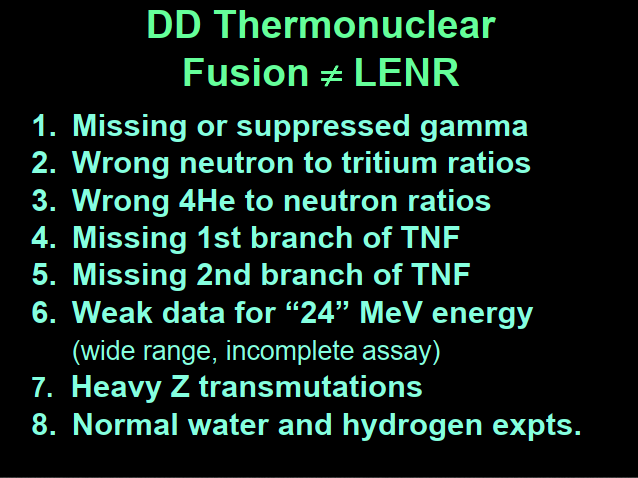"The nuclear products observed in LENRs, as well as their pairings, energies, and probabilities, were inconsistent with the nuclear products, their pairings, energies, and probabilities observed in thermonuclear fusion. The experimental evidence nevertheless shows that some kind of nuclear reactions are taking place in LENRs." - Steven B. Krivit
Steven B. Krivit launched the New Energy Times Web site in 2000. At the time, Krivit used the term "cold fusion" to identify the research because that's what most of the researchers in the field called it.
According to the "cold fusion" hypothesis, two deuterium nuclei, each having positive charges, overcome their electrostatic repulsion (Coulomb barrier) at room-temperature, with sufficient energy to allow the strong force to draw the nuclei together and fuse the two deuterium nuclei into one helium-4 nucleus. This reaction is represented by the equation D+D —> 4He + 24 MeV. It postulates that, for every 24 MeV of heat produced, one helium-4 atom is produced.
By 2008, Krivit had learned more. He saw that the characteristics of LENRs, although nuclear, did not look like those of thermonuclear fusion.
On Aug. 20, 2008, at the LENR session at the American Chemical Society national meeting, Krivit publicly stated that the experimental evidence of LENRs did not look like "cold fusion." He reviewed the differences between the reactants and products of thermonuclear fusion and the reactants and products of LENRs.
During the question-and-answer session at the end, no researchers in the room who identified the research as "cold fusion" presented any corrections to or arguments with Krivit's analysis.
In March 2009, LENR researcher Jan Marwan and Krivit organized the LENR session at the American Chemical Society national meeting. Krivit's presentation went deeper into the distinctions.
2008 ACS Meeting Slides
2008 ACS Meeting Audio
2009 ACS Meeting Slides
The scientific method does not provide the means for establishing that a new idea is theoretically impossible. So we cannot say that the "cold fusion" idea is impossible. However, is it unlikely? Yes. Is there any way to explain the "cold fusion" idea with standard physics? So far, no.
However, we can look at and compare the inputs — the reactants — used in thermonuclear fusion and those used in LENRs. They're different. We can look at the outputs used in thermonuclear fusion and those used in LENRs. They're different too.

Deuterium-deuterium fusion branching ratios, products, energies, pairings, and probabilities
By 2010, after Krivit had distinguished between LENRs and "cold fusion," and written extensively about the Widom-Larsen theory, some LENR scientists said that a neutron capture process could be considered a new form of nuclear fusion. Thus, they attempted to redefine the meaning of fusion. Krivit discussed this in his article "Neutron Capture Is Not the New Cold Fusion."

|

